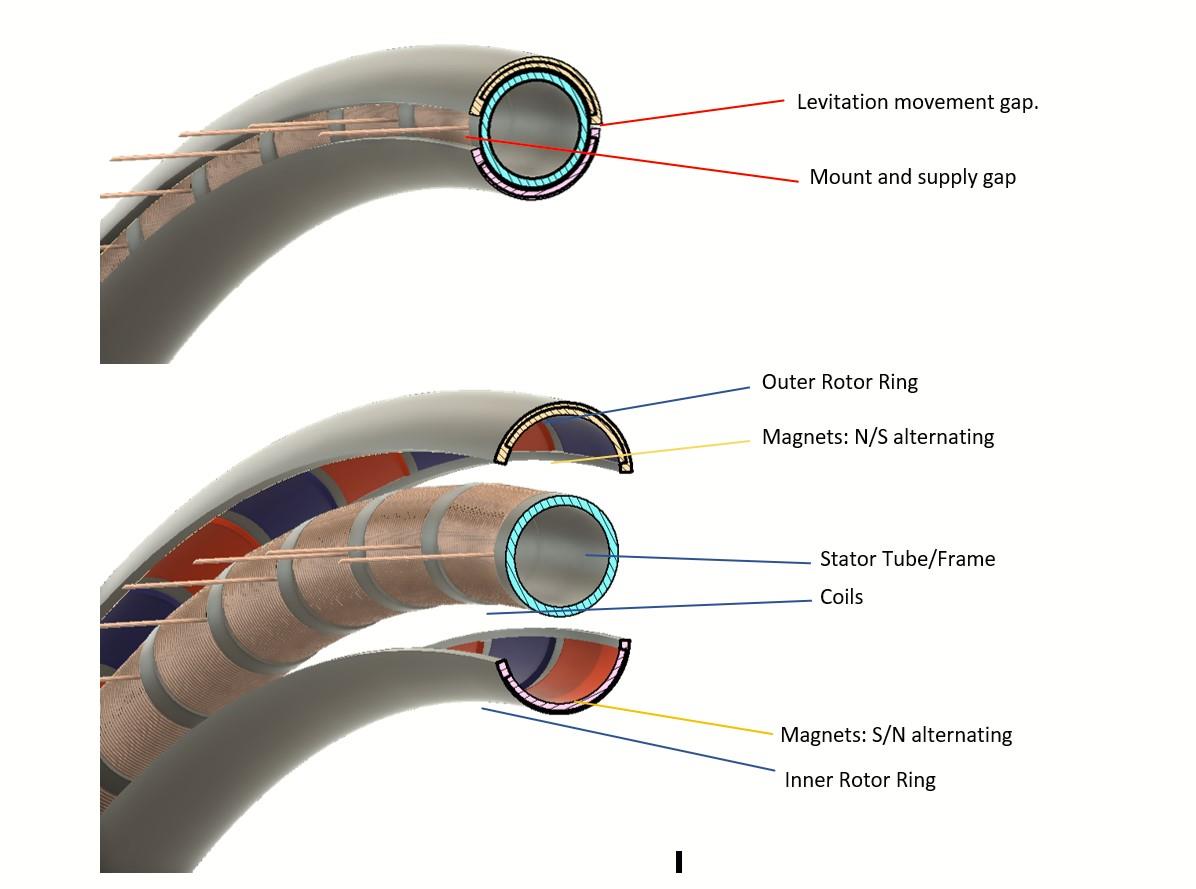Introduction:
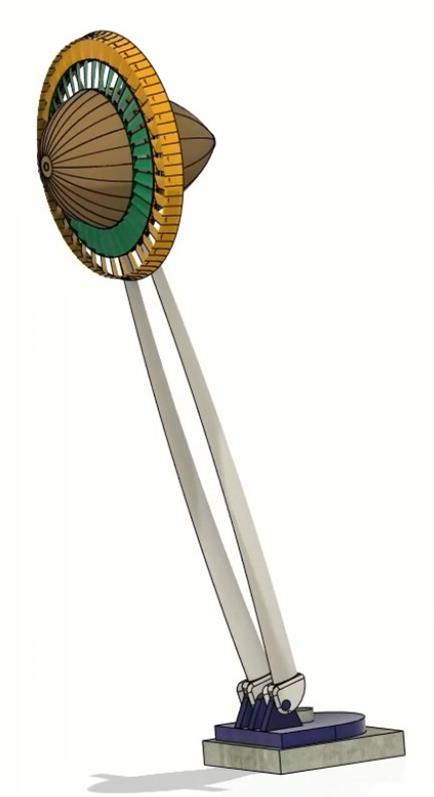
The reacting turbine blades are mounted on two counter-rotating rings (yellow - green)in order to minimize the gyro-forces and inertia of a heavy spinning disk.
The dome (nozzle) and aft cone (both in brown) accelerate the mass flow (ambient wind stream) and guide it through the turbine rings. They do not rotate but can fold to relief the wind through the turbine at strong wind speed.
The tower is hinged on the tilt plate to allow a leaning into the wind to counteract the incoming wind forces. This function is also used to erect and maintain the turbine.
The base holds the turn plate to allow the positioning of the structure in the wind with the help of actuators..

Sideview
Dome and aft cone are folded open like an umbrella to relieve windforce in high wind speed conditions.
The blade rings sweep back from the inner to the outer diameter to have a supporting tower turn force while the tower is adjusted into the wind.
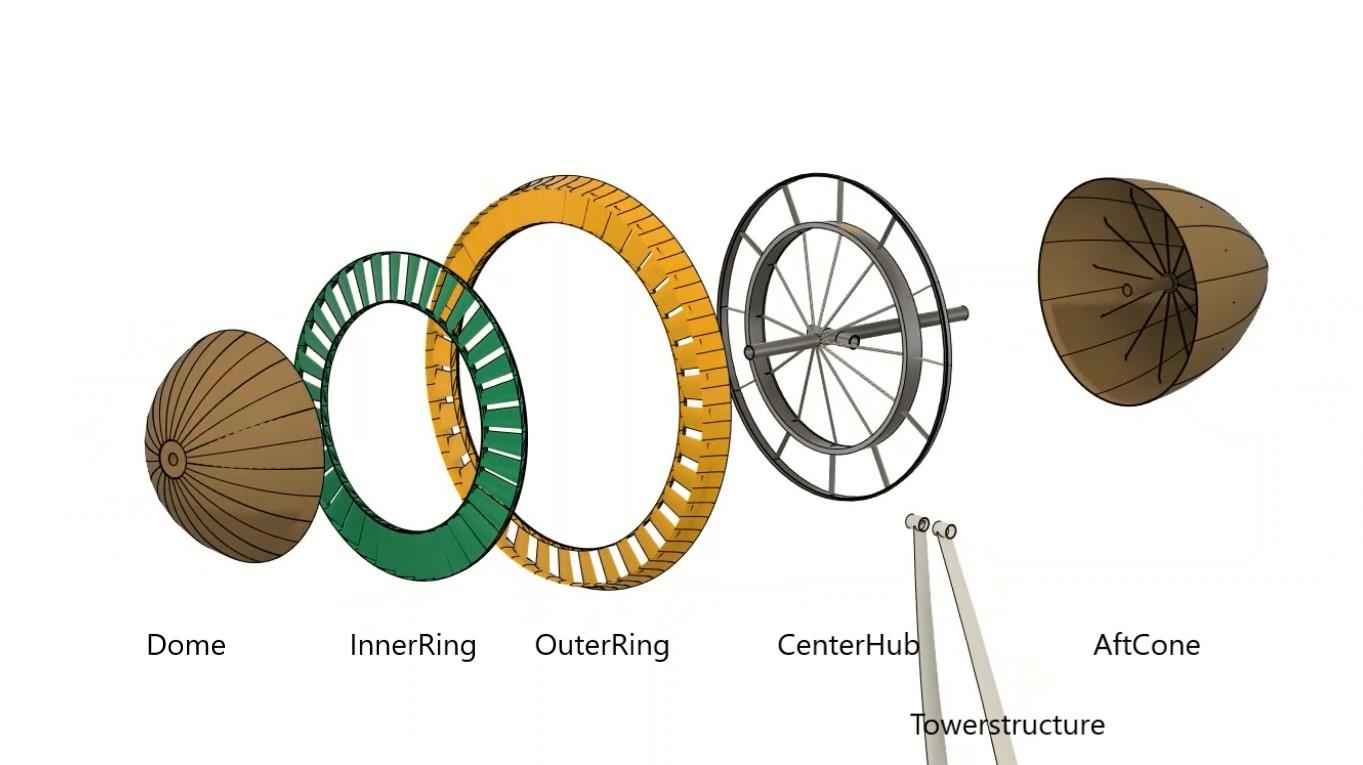
Explosion View
Front Detail

36 outer blade segments rotating counterclockwise. The diffuser profile on the outside is part of the blades and rotates with the ring.
36 inner blades rotate clockwise.
In this schematic the area of both blade rings and the dome nozzle is each ⅓ of the total projected area. However, due to the profile the reacting area is smaller. The optimum area has to be determined in the field test.
Major test reason is:
At which area reduction does the wind bypass the turbine and thus lose efficiency?

Back Detail
The grey structure supports the generator and forms a gap seal on the inner side of the inner ring between the domenozzle and aft cone.
It also connects to the tower.
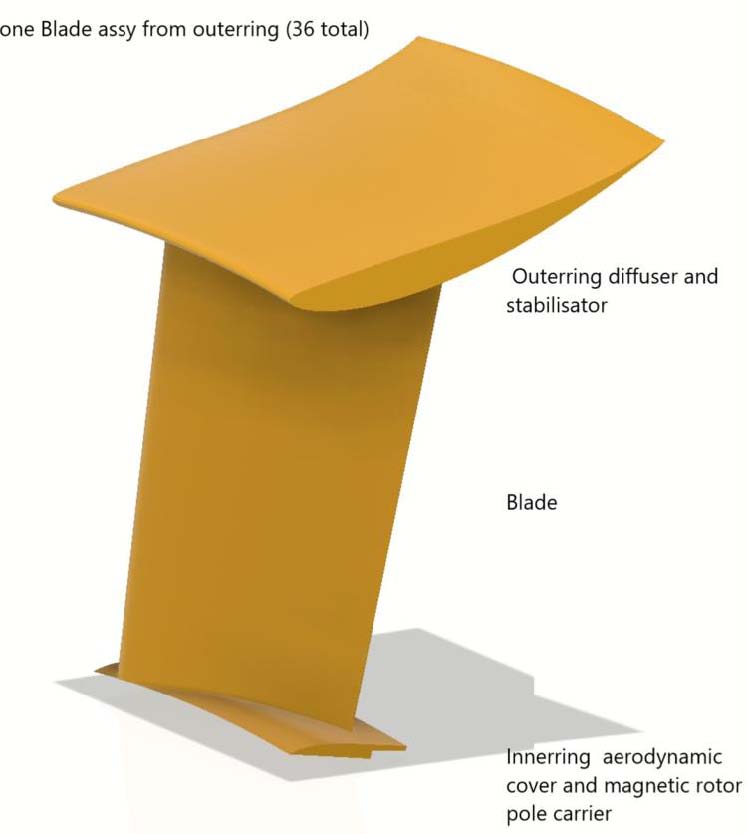
Blade details
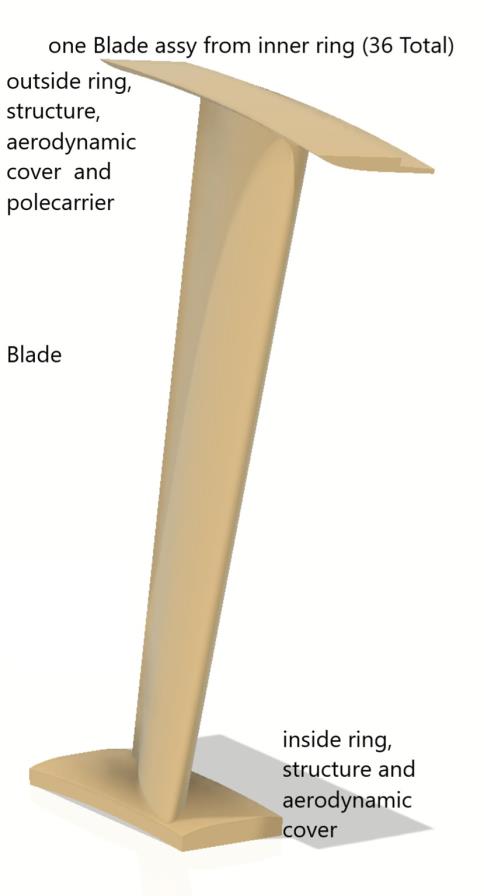
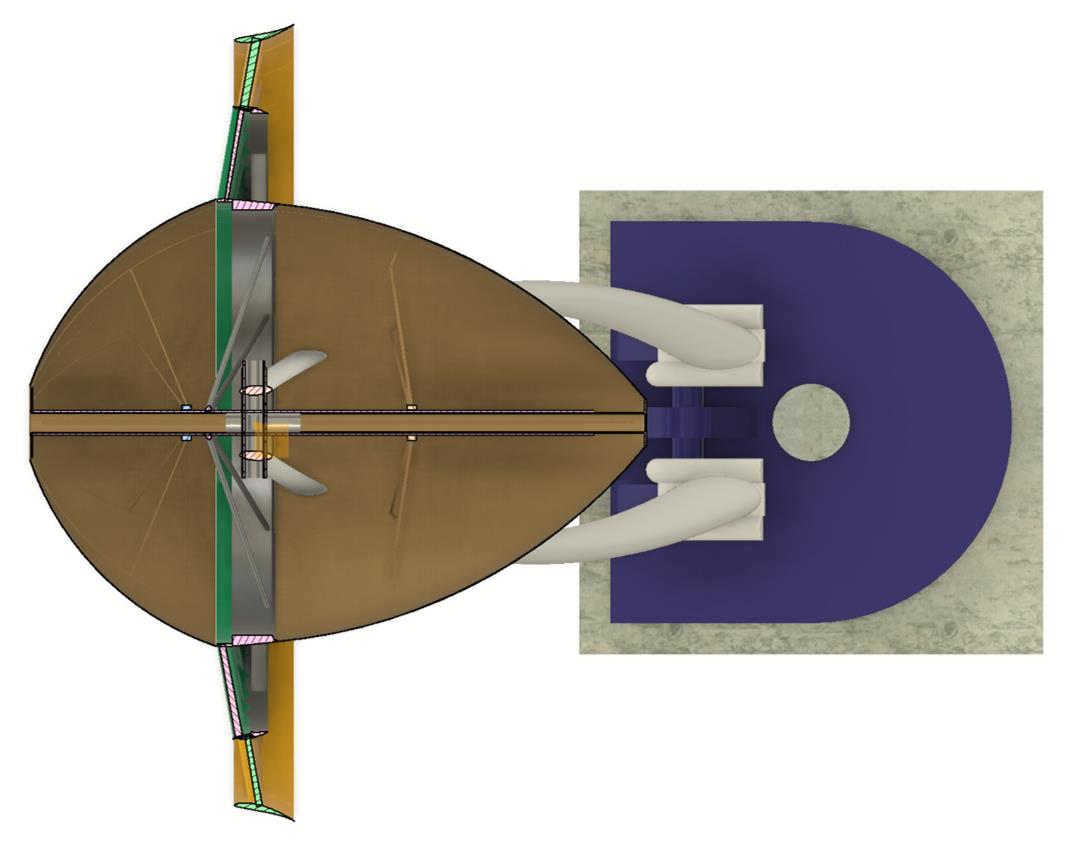
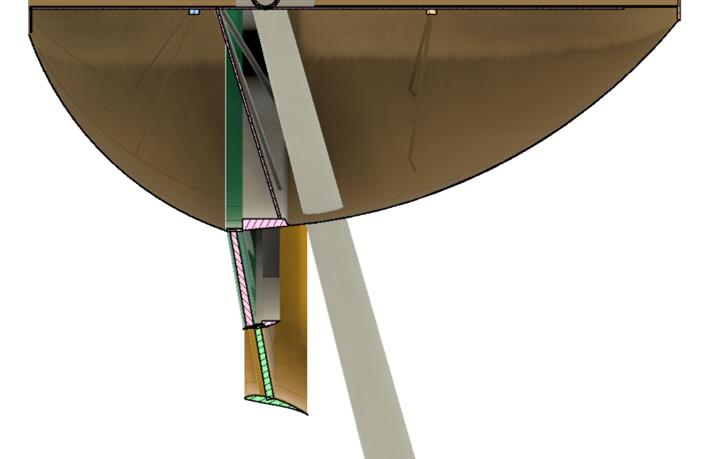
|----------------Converging—-–---|---------------------------Diverging AREA—--------------------|
>Generator schematic
here the idea of what the generator would look like in the ideal construction setup. The center tube carries the stator and is shaped as a ring in order to neutralize all acting forces. For example forces in x-y-z directions, torque, twist and magnetic.
As in a magnetic level train, it is supposed to levitate the bladerings hence avoiding provisions for roller bearing and bearing runners. The inside of the stair could be cooled to achieve supra conduction.
